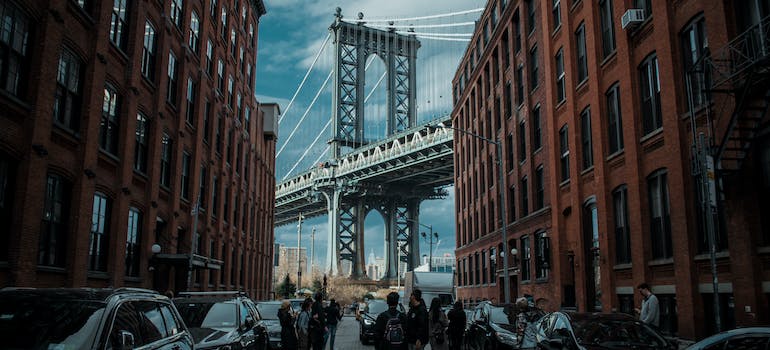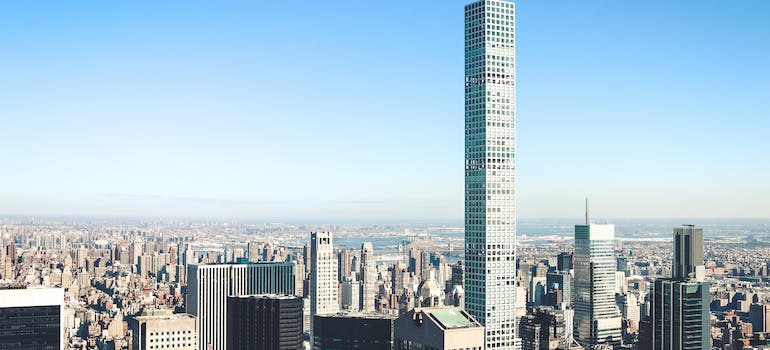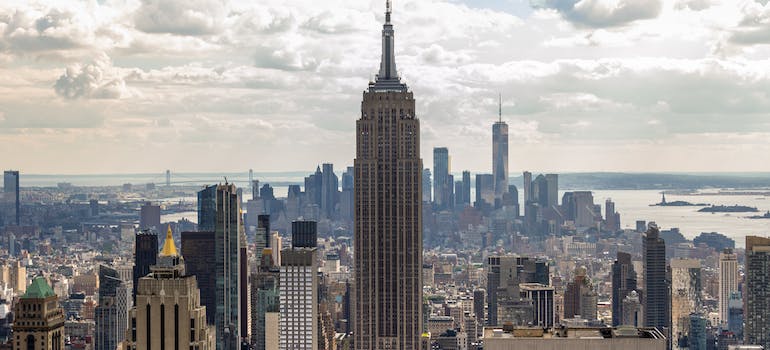Manhattan’s architectural legacy is a canvas of skyline triumphs. Each building tells its own story of design and purpose. For those considering a move to the Big Apple, the architecture is not just a backdrop but a key factor shaping their living experience. The style of your residence can profoundly influence your daily life, comfort, and sense of belonging. The architectural identity of a building can significantly affect its allure in the competitive real estate market of Manhattan. As people who are planning an NYC moving process survey their options, they must consider how a building’s design aligns with their lifestyle needs. The concrete and glass giants of this city are more than just structures.
Manhattan’s rise to the skies
The architectural narrative of Manhattan is a story of continuous transformation. It began with the classic brownstones of the 19th century, which provided a blend of communal and private living spaces and established a distinct urban residential style. These homes set the stage for the diverse architectural expressions that would define the city. As advancements in steel and engineering emerged, Manhattan’s architectural legacy soared with Art Deco towers that redefined its skyline. The Chrysler and Empire State buildings, products of this era, became emblems of progress, shaping the aspirations of the city’s inhabitants and the appeal of its real estate.

The transition into modernism introduced a wave of functional design, where the practicality of living spaces took center stage, significantly influencing market trends and preferences. With the advent of the 21st century, glass-fronted buildings offering expansive city views have become a magnet for those relocating to Manhattan, desiring contemporary comforts and a connection with the cityscape. This architectural evolution, from brownstones to high-rise apartments, not only outlines the changing aesthetic of Manhattan but also mirrors the dynamic shifts in its real estate market.
Manhattan’s residential monuments
Manhattan’s skyline is a showcase of its eclectic architectural heritage, where every building has a unique story etched into its facade. Among the various examples of urban development, certain residential structures stand out for their design, historical significance, and the living experience they offer. They are landmarks that have shaped the city’s architectural discourse and continue to influence the preferences of homebuyers and movers alike.
The Dakota: Classic elegance on the Upper West Side
Perched on the corner of 72nd Street and Central Park West, The Dakota has been a beacon of opulent living since the 1880s. Those planning to live near this historic treasure can rely on Upper West Side movers to facilitate their relocation. Its high gables, deep roofs, and large set of balconies and bay windows offer residents an aesthetic from another era. Inside, the Dakota’s luxurious apartments with sprawling layouts, grandiose ceilings, and antique details offer an unmatched living experience steeped in history.
432 Park Avenue: A modern marvel among the clouds
Juxtaposing the historic with the futuristic, 432 Park Avenue is one of the most striking of all Manhattan’s skyscrapers. Its central location and unique design — a perfect square — make it a standout in the city’s architectural panorama. The tower’s grid-like facade of large windows offers residents unobstructed views of the city and the sky, embodying modern luxury living. The interiors, defined by their minimalist elegance, cater to a lifestyle that prizes both sophistication and comfort.

The Woolworth Building: Living in gothic grandeur
In the heart of Tribeca, the Woolworth Building stands as a testament to early 20th-century ambition and splendor. Those looking to experience its historical value can enlist Tribeca movers for an easier moving experience to this Gothic Revival masterpiece or the neighborhood. Once the tallest building in the world, its detailed craftsmanship and cathedral-like interiors offer a living experience that’s both stately and steeped in nostalgia. Here, history meets luxury, providing a home that is both a sanctuary and a piece of Manhattan’s architectural legacy.
Empire State Building: A towering symbol of ambition
Standing tall in Midtown Manhattan, the Empire State Building is more than an office complex. It’s an Art Deco icon that has captured the imagination of the world since 1931. Its mast, originally designed as a mooring for airships, speaks to the era’s innovation and forward-thinking. Today, it offers not only spectacular views from its observatories but also a testament to past architectural ambitions.

The One World Trade Center: Resilience cast in steel and glass
One World Trade Center, also known as Freedom Tower, stands in Lower Manhattan, where the Twin Towers used to be. It’s not only a functional space for commerce but a marker of determination and hope. With a spire that reaches 1,776 feet, it stands as the tallest building in the Western Hemisphere. It’s wrapped in a facade of reflective glass that represents the city’s unbreakable spirit.
The Flatiron Building: A pioneering skyscraper in the heart of Manhattan
The Flatiron Building’s distinctive triangular shape makes it one of the most photographed in New York City. Located at the intersection of Broadway, Fifth Avenue, and East 22nd Street, this iconic structure is a quintessential piece of Manhattan’s architectural heritage. Its Beaux-Arts style, completed in 1902, heralded the arrival of skyscrapers and continues to be a magnet for both tourists and architectural enthusiasts alike. It symbolizes a bygone era of innovation.
Selecting the perfect building for your lifestyle
When choosing an apartment in Manhattan, think about these simple points:
- Building Design: Is it old-fashioned or modern?
- Past Stories: Does the building have a history that you like?
- Area: Do you want to live somewhere busy like downtown, or somewhere quieter?
- Features: Does the apartment have things that make your life easier and more comfortable?
If you’re planning to move, these are important to keep in mind. You need to decide what’s more important to you: old-world charm or new facilities, a lively neighborhood or a calm spot. These tips should help you find an apartment that feels right for you.
Embracing Manhattan’s architectural legacy
Manhattan’s architectural legacy is more than a collection of structures. It’s the backdrop of a rich urban area that tells the story of the city itself. Each building, with its unique style, history, and character, contributes to the narrative of New York. It offers a distinct experience for those who wander its streets and those who choose to call it home. It’s a choice that reflects personal style, embodies aspirations, and respects the past. Choose your ideal home, make a moving plan, and look forward to creating new memories in the heart of one of the world’s most dynamic cities.







